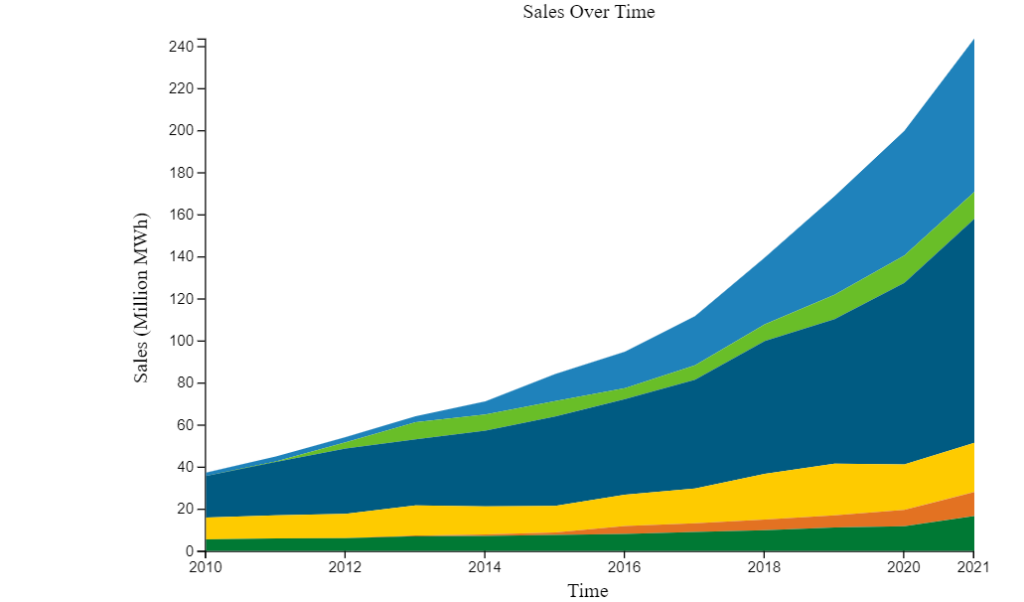
Renewable Energy Credits: Decarbonizing the Grid or Just a Corporate Messaging Tool?
Renewable energy certificates (RECs) are commonly used by companies to claim that 100% of their energy comes from renewable sources, but are these certificates worth their weight?
Electricity distribution systems are often compared to their water counterparts. Just like we expect water to flow after turning on a tap or starting a cycle in the washing machine with the tap of a button, we have grown accustomed to constant access to—as it is often summarized in the energy industry—”hot showers and cold beers.”
Similar to water pressure requirements, there are intricate processes to keep the current frequency constant at 60 Hz throughout the grid. And much like water from different springs in one pipe, it is impossible to distinguish between electricity generated by clean and dirty sources such as solar and coal, respectively, once it is on the grid. How is it possible, then, for many companies—including industry leaders such as Apple, Google, and Morgan Stanley—to claim that 100% of their energy needs come from renewable sources?
While some companies indeed fulfill their electricity demand through on-site renewable power generation (as is the case for example with Apple’s headquarters in California with a whopping 17MW capacity), most companies are only able to make these assertions thanks to renewable energy certificates (RECs). These certificates are marketable commodity goods that represent the social and environmental attributes associated with the production of green energy.
RECs are issued by green power producers, and for each megawatt-hour of electricity that is generated, one REC is issued. These certificates can then be purchased in the market by companies which in turn may retire them (i.e., not trade them further) and claim ownership of the underlying green energy benefits.
While there are several approaches to procure green energy with varying degrees of impact, RECs have become the leading instruments for both end customers and utility companies to comply with standards and substantiate statements regarding their environmental initiatives. However, the validity of these claims is coming under increased scrutiny by experts.

Data from the National Renewable Energy Laboratory, 2020.
The most puzzling aspect of RECs is the fact that they do not represent the actual electricity that results from green energy production—only its social and environmental components. Since the actual electricity and the RECs are often sold separately in what are called unbundled certificates, the electricity itself being used by a company that acquired RECs is not inherently any cleaner (or dirtier) than that from its next-door neighbor which has never heard of these certificates.
This company, however, is legally allowed to make claims such as “100% of energy comes from renewable sources”—even if the actual electricity was produced by a coal plant. Considering this, a critical question arises: what is the actual impact of RECs in the decarbonization of the grid, especially when considering the wide usage of these instruments by companies in their green initiatives?
A number of studies have zeroed in on the influence of voluntary RECs—those purchased by private customers—on renewable energy production and have gathered significant evidence to suggest that these certificates have had little to no impact. One of these studies, led by researchers at Princeton, Harvard, and UCLA, for example, found that if the power market for voluntary RECs did not exist, “the amount of electricity generated by wind power in the United States would be little different than what we actually see today.”
A paper published in 2022 in Nature which received significant attention from the media argued that due to the drop in the prices of RECs in recent years, the revenue associated with these certificates is insufficient to promote an increase in green energy production. The paper concludes that while the group of companies being analyzed reported a combined 30.7% reduction in emissions resulting from their REC purchases, the actual reduction was closer to 9.9%.
Voluntary and compliance RECs have played a major role in the grid decarbonization discourse in recent years. Particularly, with the increase in discussions regarding corporate responsibility, RECs have become a simple way for companies to signal to customers their awareness of environmental responsibilities. The evidence, however, suggests that RECs are not an effective instrument to decarbonize the grid at the required pace, and some have even described them as a form of greenwashing.
As customers increasingly demonstrate their preferences for eco-friendly companies, it is critical for both the environment and business performance that companies bridge the gap between their statements regarding their environmental efforts and actions. RECs are not an issue themselves—only when used by companies to dodge their environmental responsibilities. Corporations must move away from strategies centered exclusively on RECs and further emphasize projects with greater environmental impact such as power purchasing agreements, in-house energy production, and reduction of direct emissions—something that has been proven feasible by many companies, including Walmart, IBM, and Salesforce.
This insight is a part of our Undergraduate Seminar Fellows’ Student Blog Series. Learn more about the Undergraduate Climate and Energy Seminar.
Enzo Bergamo
Undergraduate Seminar FellowEnzo Bergamo is an undergraduate and master’s student studying Systems Science and Engineering with a concentration in Energy & Sustainability. Bergamo is also a 2023 Undergraduate Student Fellow.

